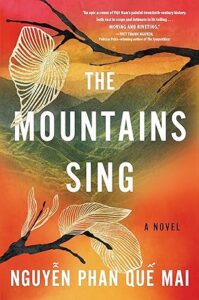The third and possibly the last chance to grab the agent/editor’s attention in the query letter is to finish the pitch by providing comp titles. Comp title is abbreviated for comparing title or competitive title.
The first paragraph gives an overview of the manuscript: age category (PB, MG, or YA), word count, type (graphic novel, STEM, biography, verse, etc). Afterward, the plot of the story should be summarized in a Logline. And, finally, the comp title which we are going to look closely at in this blog post.
Purpose of Comp Title
Let’s start with a basic question: Why does a pitch need a comp title? Wouldn’t the Logline suffice?
The first and foremost purpose that I read frequently in the blog posts is that by comparing your manuscript to a recent book (published in the last 3-to-5 years), you present yourself as an avid reader who knows the market well.
I thought that is correct until I read a blog from Jacqui Lipton which shed light on the basic purpose of the comp title:
And that makes sense if you walk a minute in the shoes of an acquisition editor; she liked the manuscript and wants to discuss it in the meeting with the marketing team. The story’s plot or theme is not a subject of interest for the marketing team; their job is to predict, according to the market’s situation, that this manuscript would earn out the costs of its publication or not. The acquisition editor cannot discuss the book’s general category or address the plot; she needs to speak in the terms of the market, and this is the task for the comp title to fulfill.
The comp titles work as a compass if hand-picked thoughtfully; they are supposed to show the direction to the marketing team.
Basis of reasoning
Let’s suppose we want to compare apples with other fruits. An apple has many characteristics. Which one do we want to choose as the basis? Apple is a fruit with edible skin. Do we want to select based on this or focus on the taste? Or, find fruits with inedible seeds? Or, do we want to think of the yellow color of the apple? etc.
The same applies for comparing a manuscript; which characteristic of the manuscript is our start point? Here are some suggestions I got the idea from this blog:
- Theme (friendship, new experiences, loss, coming of age, etc.)
- genre (fiction vs nonfiction; fantasy, contemporary, romance, etc.)
- Type of character (animal vs. human, inanimate objects)
- Tone (lyrical, humorous, thrilling, etc.)
- Illustration type, esp if it’s a picture book and you are also the illustrator
- Amount of illustrations (full-page vs spot illustrations vs illustrations only at the start of the chapter, etc.)
- Plot
There is no right or wrong answer. It is up to you to decide which aspect is the most important feature of your manuscript.
Now, let’s go back to our apple example. Can you guess my reasoning basis if I tell you apples are like cucumbers? You need to think and guess, right? Taking into account that manuscripts are far more complicated than the humble apple, and editors don’t have time to play a guess-game, you see just giving the name of some books would not be that helpful. It occurs to me when I read this blog post. Consider one of its examples:
Consider how much “the quirky sensibility” and “the freewheeling voice” helps to understand the comparison.
Another option to highlight the comparison is to address the difference. Look at the below example that I took from this blog:
The explanation from the aforementioned blog is very good: Readers familiar with Andrews know her mystery books are laugh-out-loud hilarious. Equating yourself to her in this instance says, “I’m funny too, but I also give you stronger settings and culture.” The key with this technique is to highlight what your book does well while at the same time showing how it is unique from what’s already on the market.
Having said this, some agents and editors believe that giving or skipping comp title is a matter of personal choice. Here is one blog post example.
How to find Comp title
Databases, like Goodreads tag list or NovelistPlus, could be one of the options. I read in some blog posts that use Amazon; when you search for a book in Amazon, if you scroll down, you see a section with the title of “Frequently bought together”. I am cautious and reluctant to use those titles because the logic of the machine learning algorithm behind the Amazon suggestions is based on the shopping lists of other people that you don’t know. No doubt that their algorithm is efficient for their purpose, but the comp title is a far more sensitive subject to leave to a machine to decide for.
My main resource to find a comp title is the 12×12 Facebook page or the kidlit 411 Facebook page.
In the next blog post, we will look at pitch examples of published picture books.
Looking forward to reading your comments and suggestions.
On the 1st of October, I will publish the first newsletter of my blog posts so far. If you haven’t subscribed so far and you’d like to receive it, please subscribe here.
Go back to the blog page
Published on: 27.09.2021, Last update: 27.09.2021




